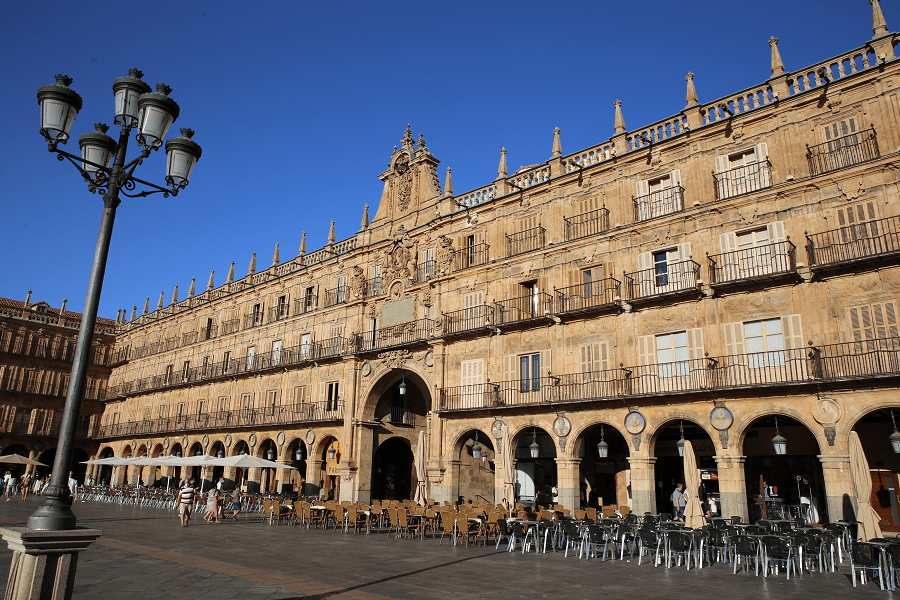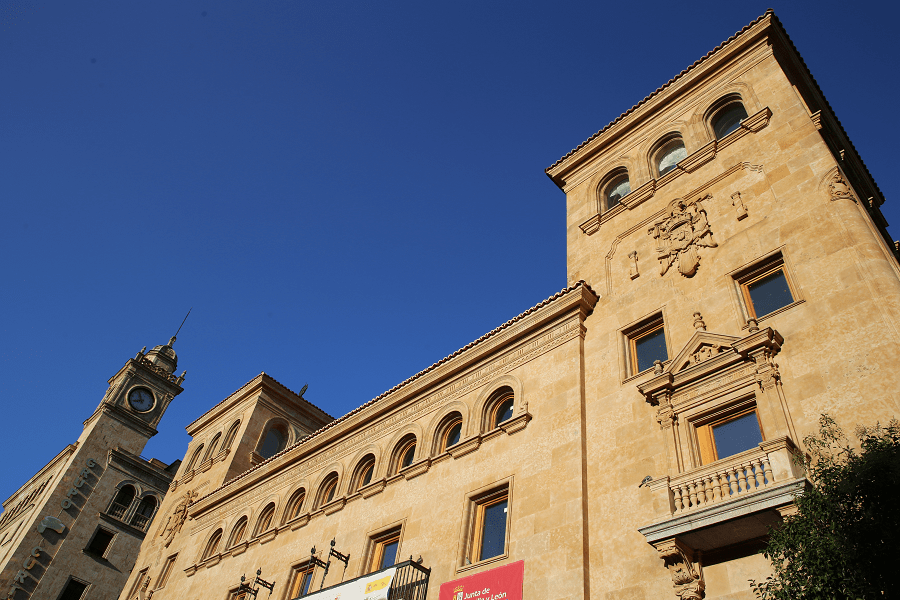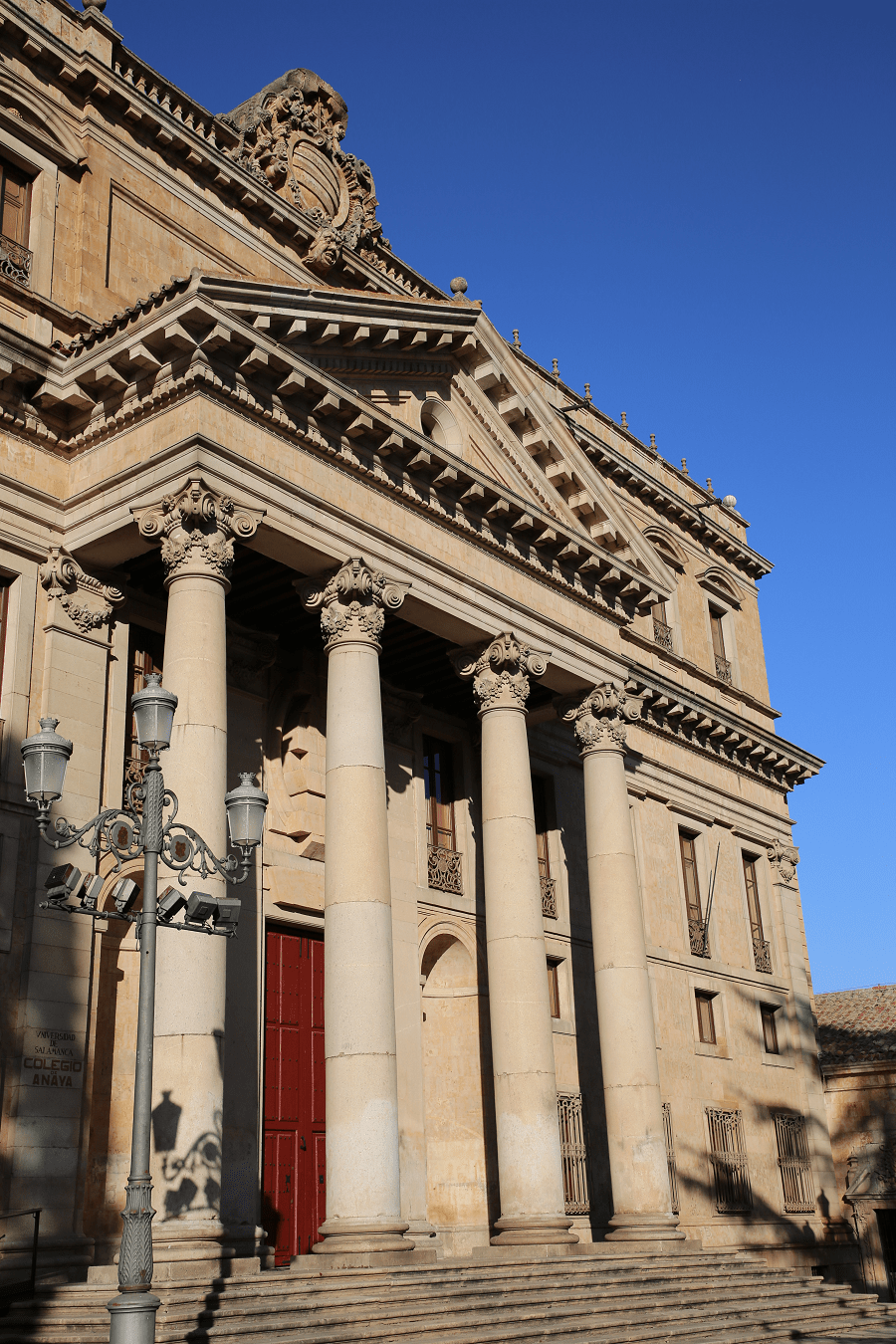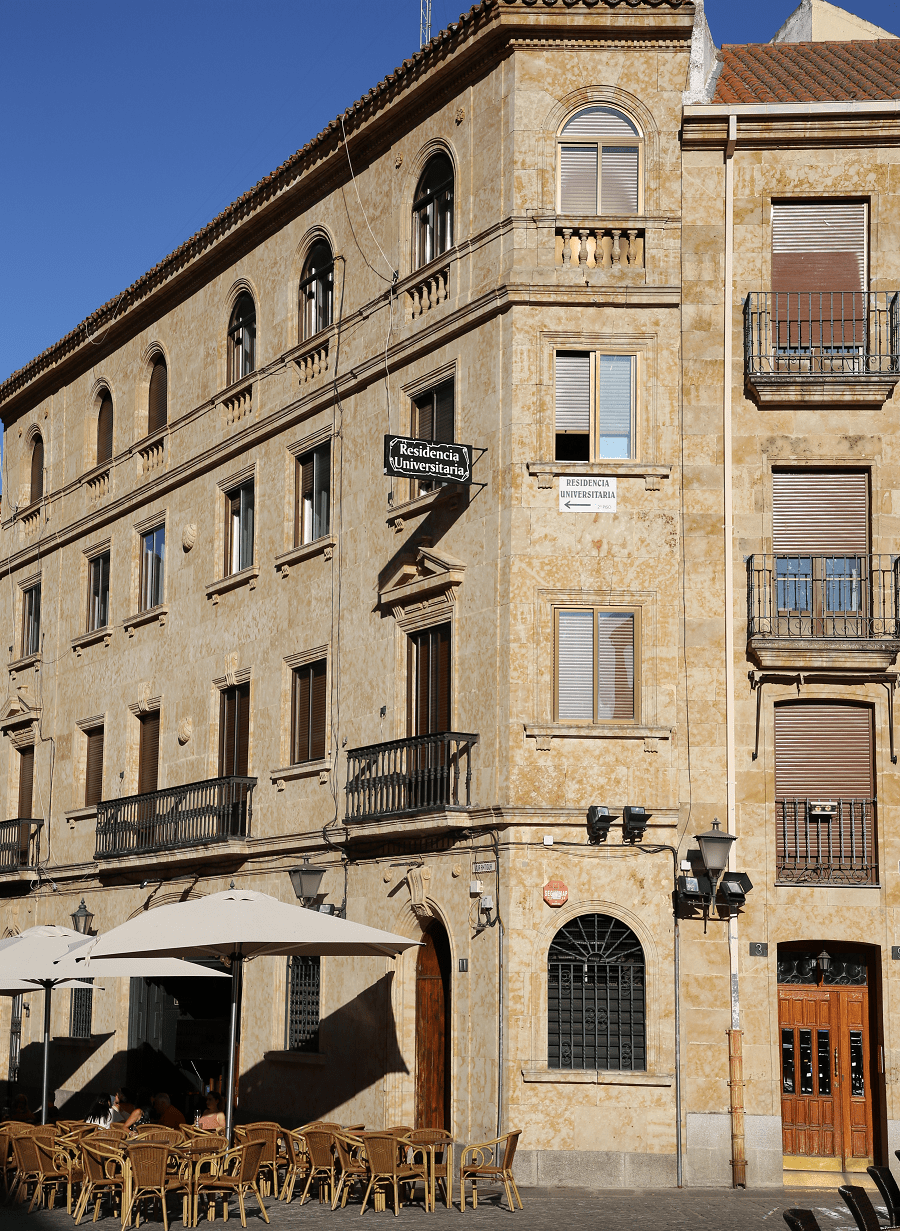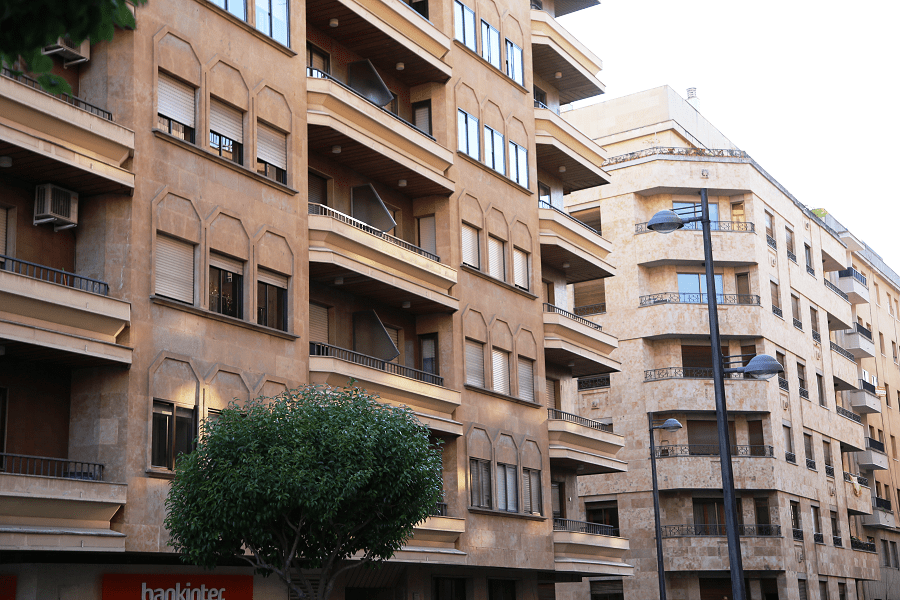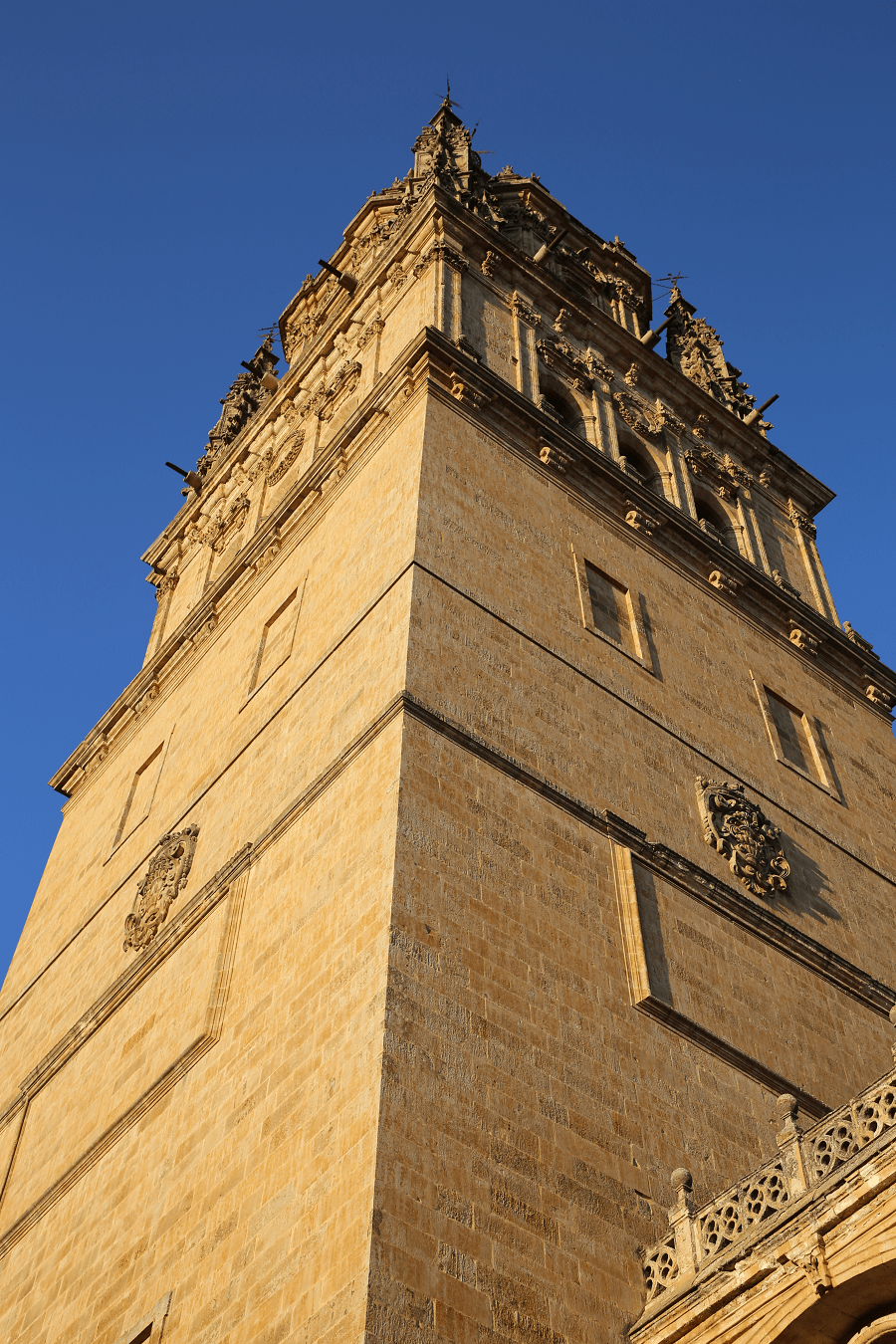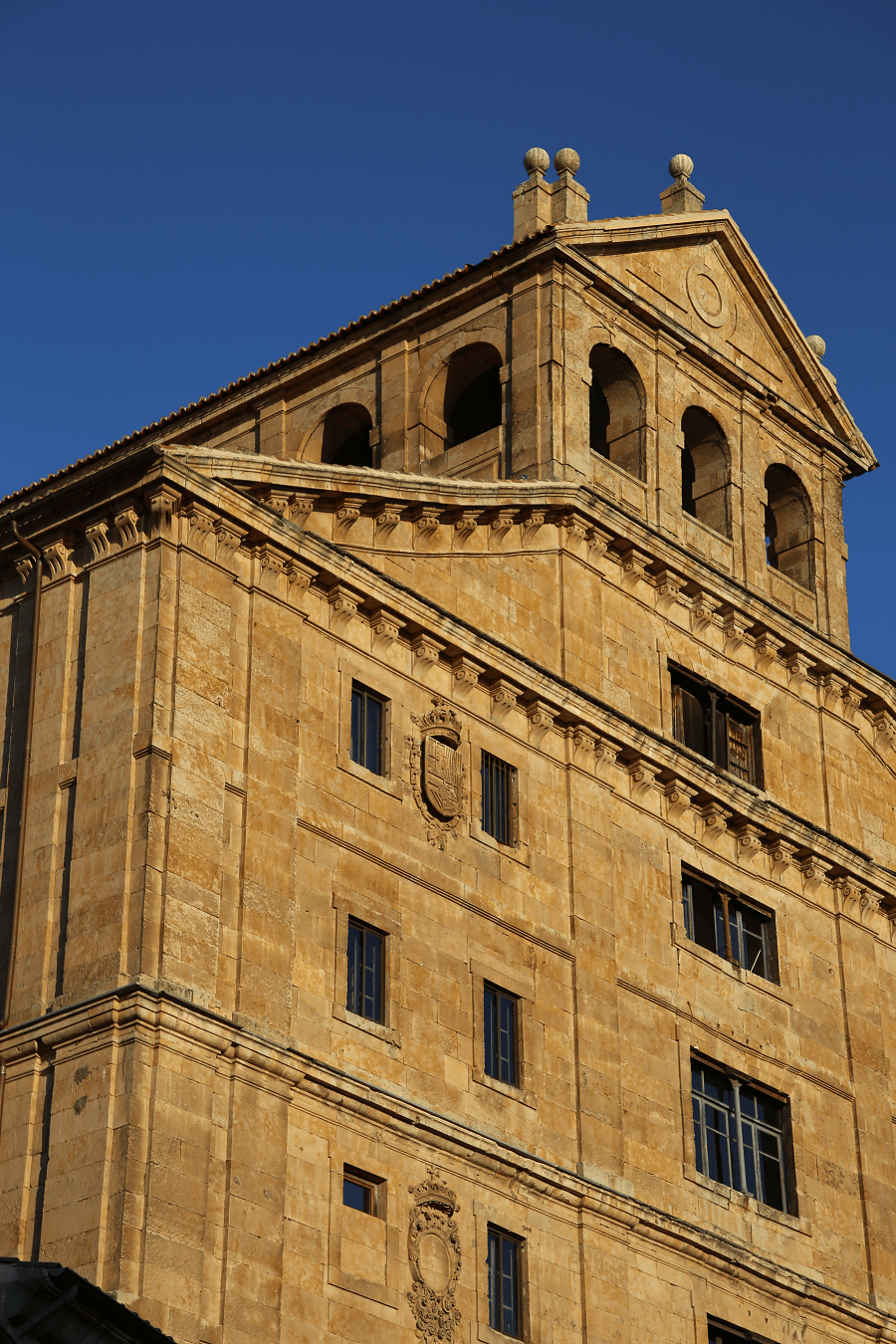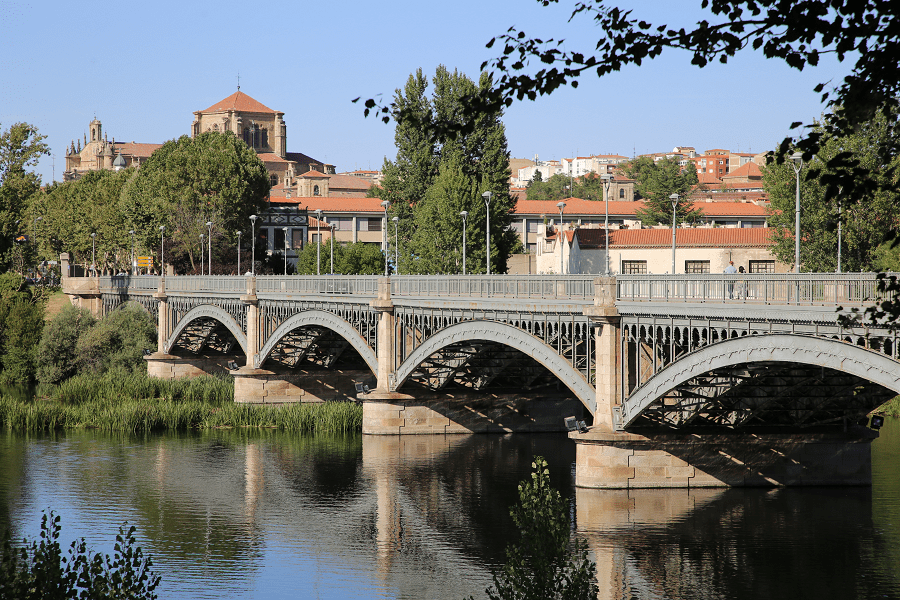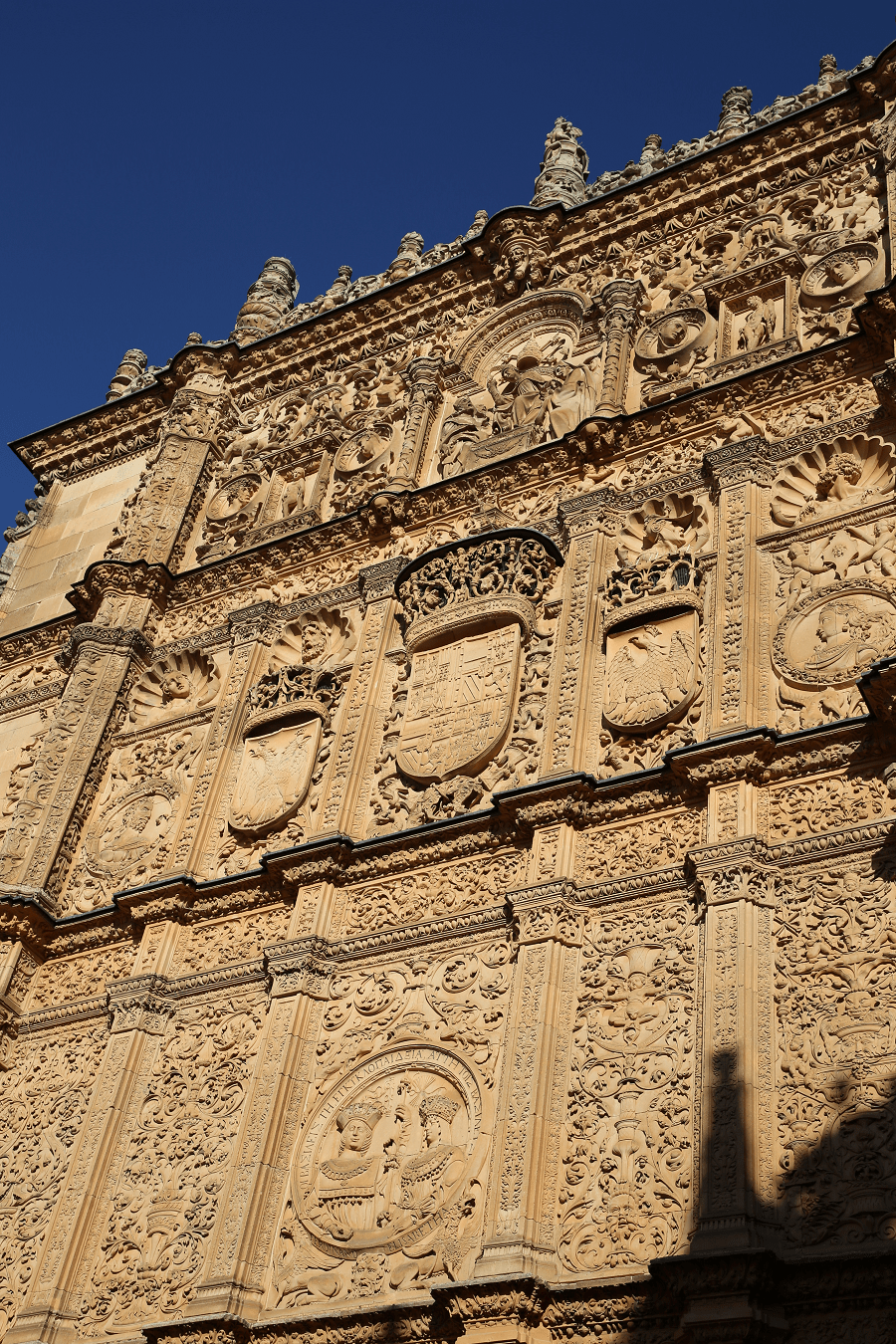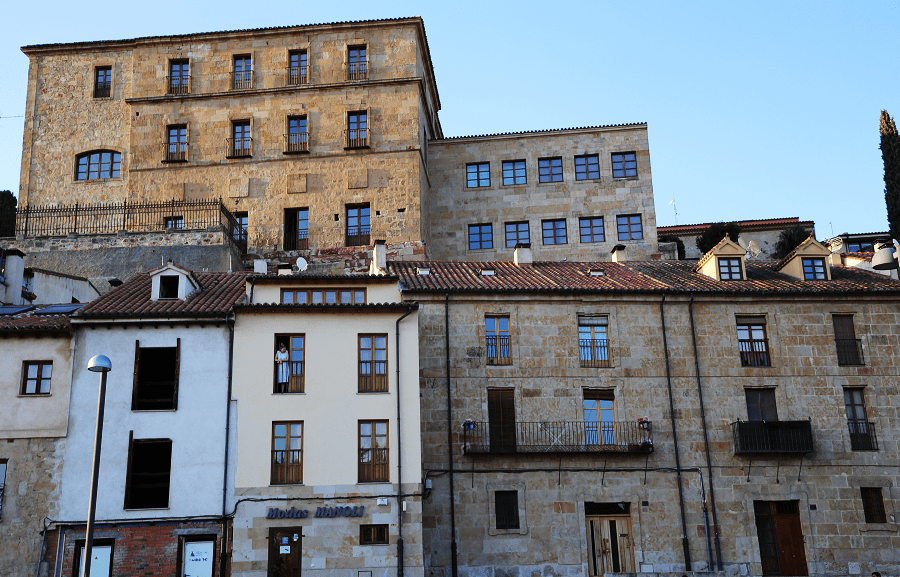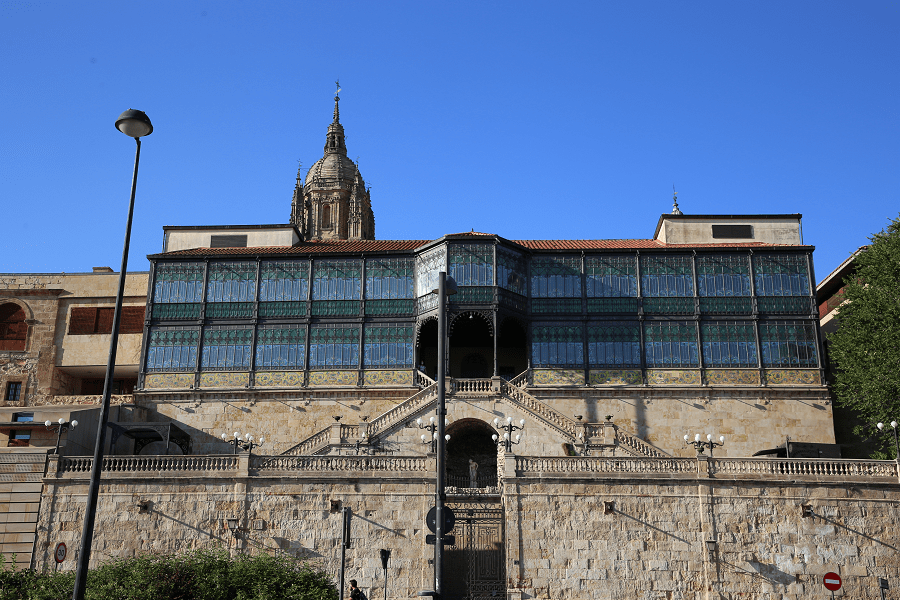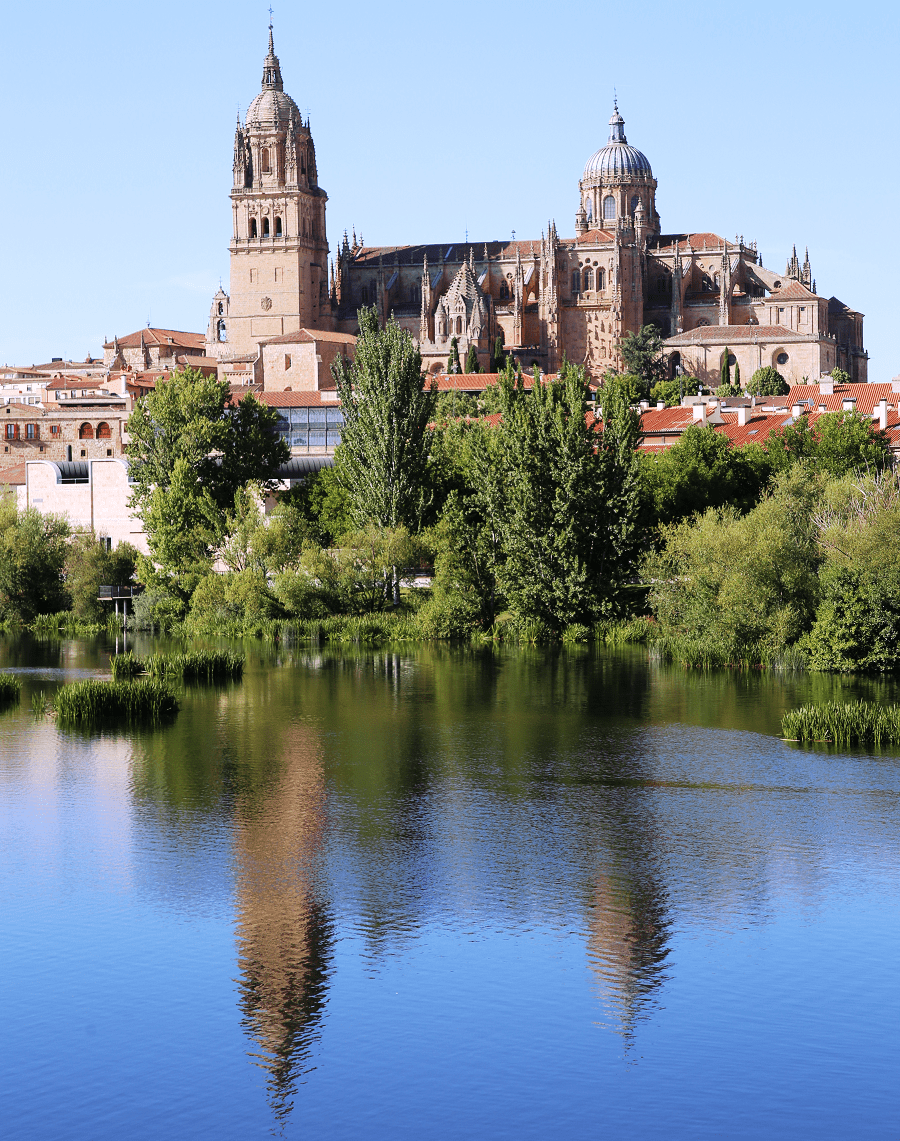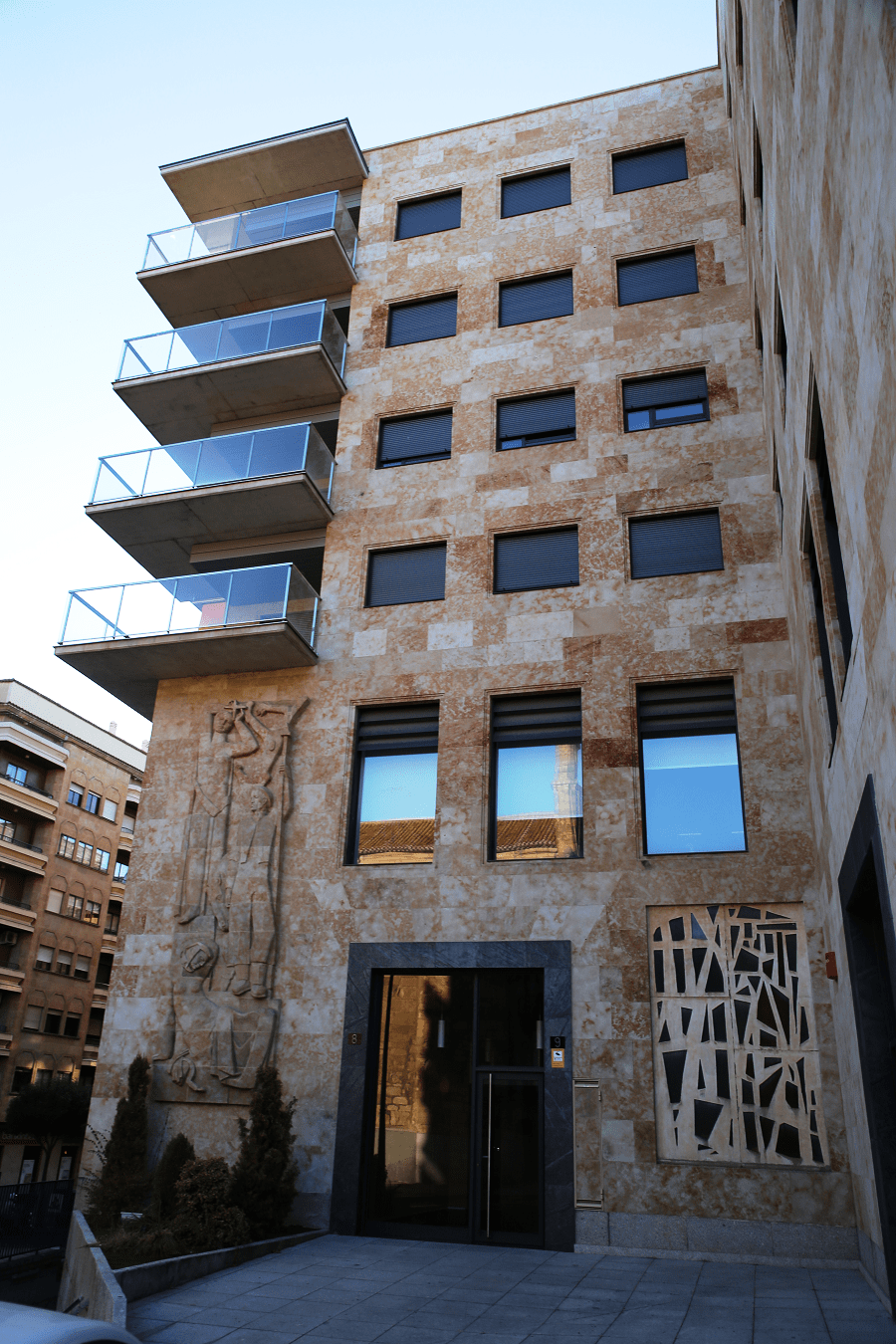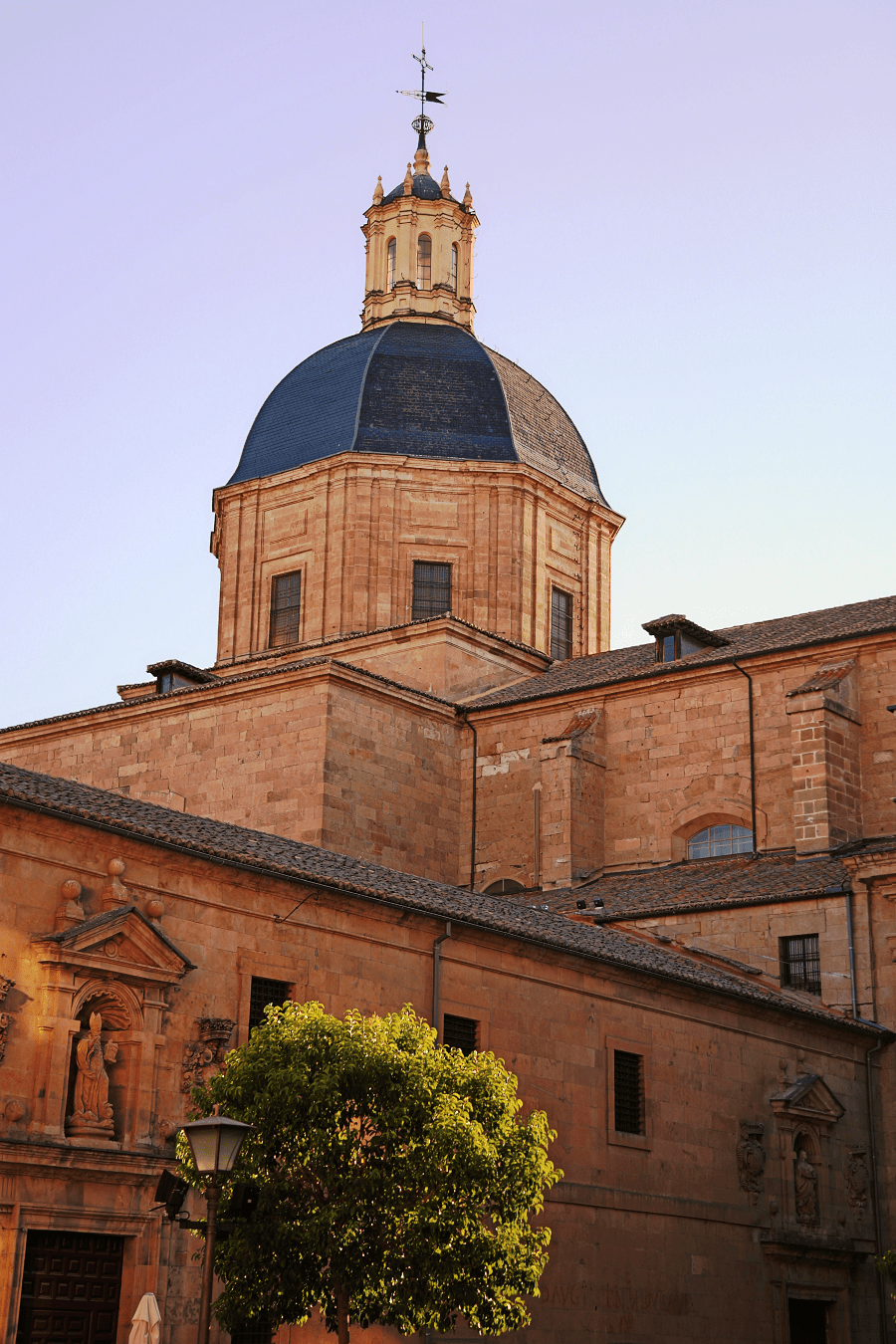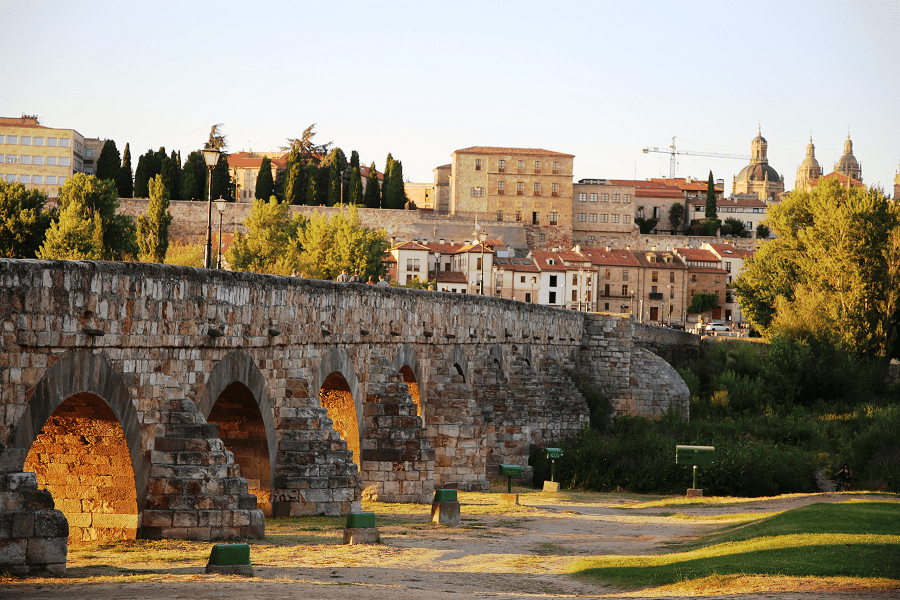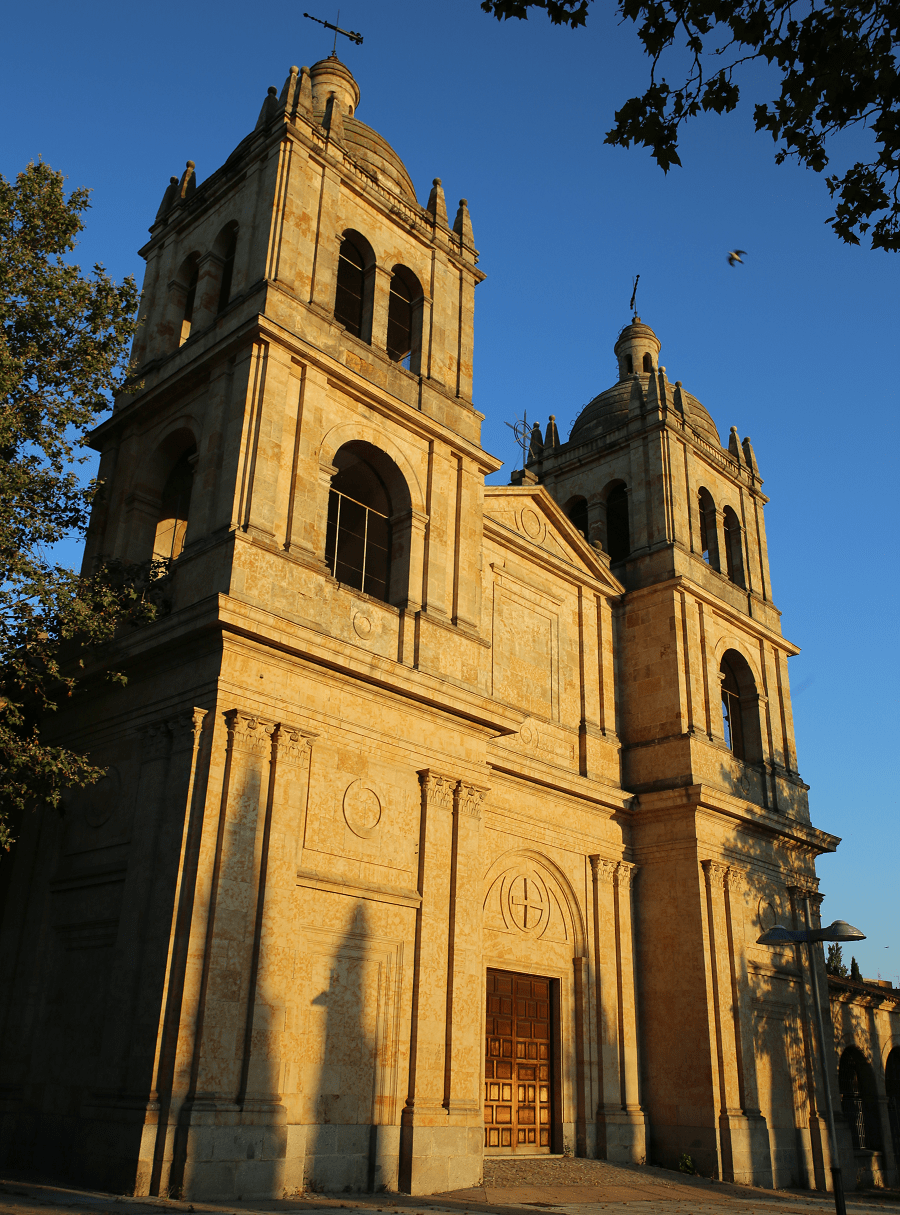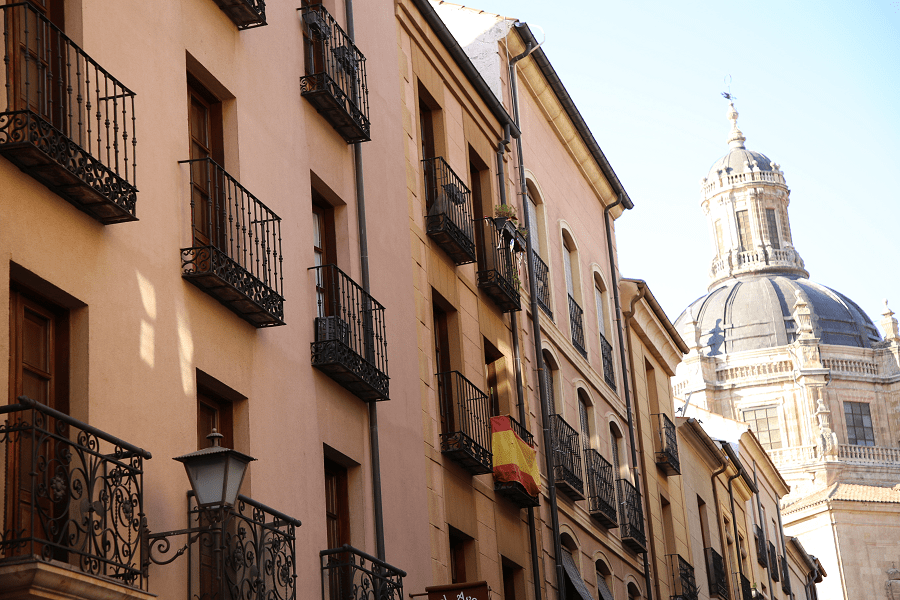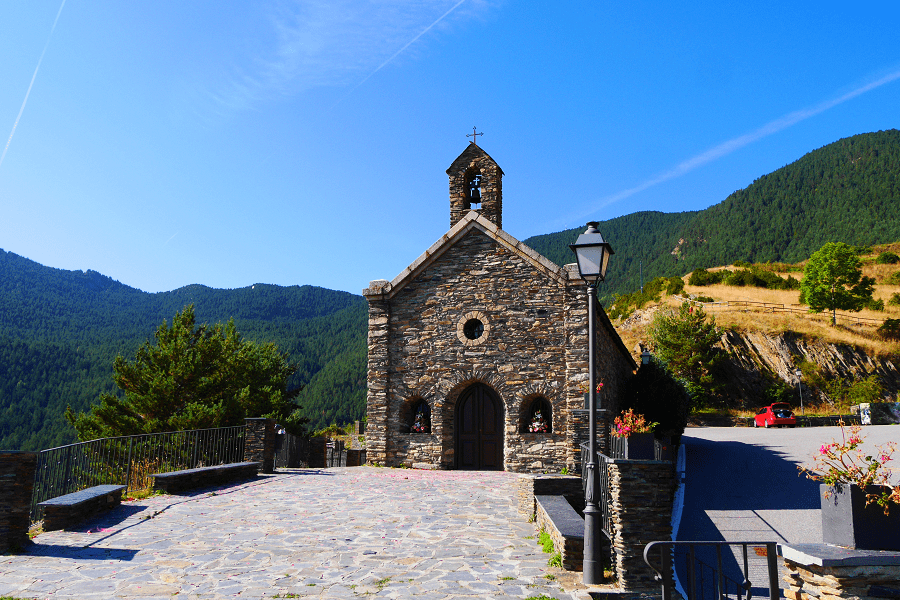Salamanca is a municipality and a city situated in western Spain, it is the capital of the Province of Salamanca in the autonomous community of Castile and León.
In 1988, the old city was declared a World Heritage Site by UNESCO. It has an important historical-architectural heritage, among which its two cathedrals – the Old and the New – stand out, the Casa de las Conchas, the Plaza Mayor, the convent of San Esteban and the Escuelas Mayores.
In 2002, it was named, together with the Belgian city of Bruges, European Capital of Culture by the Council of the European Union and the European Parliament.
Since 2003, its Holy Week has been declared of international tourist interest. In 2005, it hosted the celebration of the XV Ibero-American Summit and since that year it has hosted the International Arts Festival of Castilla y León.
In Salamanca there are important scientific institutions and research centers, such as the Cancer Research Center, the Institute of Neurosciences of Castilla y León (INCyL), the Center for Research and Technological Development of Water (CIDTA) and the Ultra-short Ultra-Intensive Pulsed Lasers Center (CLPU).
The city and its metropolitan area are home to some of the largest companies of the autonomous community of Castile and León.
The University of Salamanca, founded in 1218, is the oldest university in Spain and the third oldest western university. Pope Alexander IV gave universal validity to its degrees. With 30,000 students, the university is, together with tourism, a primary source of income in Salamanca.
In addition, it is considered the largest world benchmark in the teaching of Spanish, since it concentrates 78% of the existing offer in its autonomous community, which represents 16% of the national market.
Main attractions
Squares
The Plaza Mayor: in the baroque style, designed by the architects Alberto and Nicolás Churriguera, it is the most important of the public spaces and the heart of the city.
Campo de San Francisco: first public garden in the city on land of the old convent of San Francisco el Real.
Huerto de Calixto y Melibea: garden near the cathedrals, where, according to some, the plot of the novel La Celestina by Fernando de Rojas is located. Next to it are remains of the Roman wall.
Plaza del Corrillo: small square attached to the Plaza Mayor. On the left is the Romanesque church of San Martín and on the right a series of houses with arcades formed by stone columns that represent the days of the week (a moon for Monday, a Mars for Tuesday, etc.).
Cathedrals
Salamanca has two cathedrals, the old one, dating from the 12th century and in the Romanesque style, and the new, much larger, begun in the 16th century in the Gothic style and completed in the 18th century. The place where the two meet is known as Patio Chico and it is one of the most interesting corners of the city.
The main tower of the new cathedral was built on top of the bell tower of the old cathedral. In it, a crack originated by the Lisbon earthquake of 1755 is still visible.
La Clergy is currently the headquarters of the Pontifical University. Construction began in 1617 and was completed a century and a half later as the Royal College of the Holy Spirit, of the Society of Jesus. It is in the baroque style.
The Convent of San Esteban is a Dominican convent from the (16th century). The Plateresque façade, with its triumphal arch shape, is an authentic jewel of the Salamanca Renaissance. Impressive baroque altarpiece by José Benito Churriguera. Also noteworthy is the Cloister of the Kings, Renaissance.
The Convent of the Dueñas was built in 1533 and the interest of the entire building is mainly focused on the magnificent cloister, which had to adapt its plan to the layout of the original rooms, for which it developed a unique irregular pentagonal plan. It consists of two floors.
University buildings
University: set of buildings that made up the old University of Salamanca, which include the Major Schools, the Minor Schools and the Hospital del Estudio (current rectory). These buildings are located around the square called Patio de Escuelas. In this same square is the house of Dr. Álvarez Abarca or of the Doctors of the Queen (15th century), whose facade is Gothic with Renaissance details and which today is the Museum of Salamanca.
Unamuno House-Museum (18th century): former home of the University rectors. It is preserved as Miguel de Unamuno had when he held this position.
Colegio Mayor de Santiago el Zebedeo, also called “del Arzobispo Fonseca” or “los Irlandeses” (16th century).
Colegio de San Ambrosio (1719): currently it is the General Archive of the Spanish Civil War. It houses documents and objects seized by Franco’s troops and their allies during and at the end of the Spanish Civil War.
Palaces
Casa de las Conchas: it was built at the end of the 15th century. In a civil Gothic style, its façade is decorated with around 350 scallop shells, distinctive of the Order of Santiago. Gothic window bars are also important. It currently houses a public library.
Casa de Don Diego Maldonado: Plateresque palace from the 16th century. It houses the Hispanic-Brazilian Cultural Foundation and the Center for Brazilian Studies of the University of Salamanca.
Casa de Doña María la Brava: Gothic building from the 15th century, prototype of the noble mansions of the time. Its owner, María de Monroy, was the head of one of the two groups into which the city was divided in the 15th century. It is located in the Plaza de los Bandos.
Casa Lis: Modernist mansion from 1905 with an iron façade. Built on the wall. It houses the art nouveau and art deco collections donated by Manuel Ramos Andrade.
Casa de las Muertes (early 16th century): built by Juan de Álava, and named for the skulls that decorate the façade. On one occasion when the building was renovated, the skulls were rounded and turned into balls, but it remained such a gloomy name and that was reason enough for the popular imagination to invent a legend that ran for many years.
Others
Alcazar de Salamanca: old urban military fortress located in the extreme southwest of the medieval walled area of the city of Salamanca. Currently, its abandoned archaeological remains can be seen in the Vaguada de La Palma, on the western end of the Peña Celestina, the original nucleus of the city during the Repopulation of Extremadura Leonesa in the 11th century.
Salamanca Cave: located on the Carvajal slope, where it is said that the devil taught black magic. Therefore, in a part of Spanish America, a Salamanca is a cave of witches. What is known today as the Cueva de Salamanca, is actually part of the sacristy of the disappeared church of San Cebrián.
Mercado de Abastos (1899-1909): located in the old Plaza de la Verdura. Built in iron, it was designed by the Jerez-born architect Joaquín de Vargas y Aguirre (also the author of Casa Lis for Miguel Lis) at the beginning of the 20th century. Inside, the typical ingredients of the gastronomy of the province of Salamanca are offered for sale.
Medieval walls: at present there are visible samples of the wall near the Calixto and Melibea orchard next to the Tormes river. The walls make up two walled enclosures in the city, the first and oldest that has its center in the Plaza de Azogue Viejo located near the Cathedral. The second dating from the twelfth century that has its center in the Plaza Mayor.
Cerro de San Vicente Archaeological Park: an archaeological site that preserves remains of the first population center of the city in the Iron Age and the later Benedictine monastery of San Vicente.
Museums
Museum of Art Nouveau and Art Déco: located in Casa Lis, it houses a collection of furniture and objects representative of the decorative arts. It was inaugurated in the spring of 1995 with funds from the donation that the collector Manuel Ramos Andrade made to the city. It is one of the most iconic buildings and the most outstanding museum in the city.
Salamanca Commerce Museum: dedicated to recovering and preserving the memory of economic, industrial and commercial activity, especially of the city and its province.
Unamuno House Museum: house located in the historic center of the city, belonging to the University. It was built in the 18th century and dedicated to the Rectoral House, it is known for having been the place where Miguel de Unamuno lived when he was Rector of the University of Salamanca, since the fifties it is a museum dedicated to his life and stay of the writer in Salamanca (1900-1914).
Salamanca Automotive History Museum: it is the first public museum in Spain dedicated to motors. Inaugurated at the end of September 2002 by the Kings of Spain, it has more than 200 historic automobiles in its collection, some unique, as well as thousands of accessories related to the automobile. It is located in a building that was the first electricity production plant that Salamanca had.
Modern art museum DA2 Domus Artium 2002: a contemporary art center, inaugurated in April 2002, on the occasion of the European Cultural Capital that was held in Salamanca throughout that year. It is built on what was the old provincial jail, a building from 1930, preserving original elements such as the cell doors and the original iron fence.
Salamanca Museum: it was created in 1835 and, since 1947, has its headquarters in the Casa de los Abarca, an old Salamanca palace built at the end of the 15th century. The entrance to the museum, which is made up of an archeology section and a Fine Arts section, is from the Patio de Escuelas, although the noble façade of the Casa de los Abarca is located on Calle Serranos.
Cuisine and gastronomy
Among many local dishes, chanfaina (steamed rice with pork) is very popular. Another distinctive dish is the cocido, a slow-cooked chickpea-based casserole. However, hornazo, a meat pie, is the most popular dish.
There are five Michelin list restaurants in the city:
- En la Parra, San Pablo 80, 48 – 65 EUR • Modern Cuisine (one star)
- Víctor Gutiérrez, Empedrada 4, 72 – 110 EUR • Creative, Fusion (one star)
- El Alquimista, Plaza San Cristóbal 6, 18 – 45 EUR • Modern Cuisine
- El Mesón de Gonzalo – La Barra, Plaza del Poeta Iglesias 10, Traditional Cuisine
- Tapas 3.0, Sánchez Barbero 9, 15 – 34 EUR • Modern Cuisine
Shopping
There are more than 4,000 establishments located around: clothes, shoes, accessories, jewellery, souvenirs, food and drink, local handcrafts. The shopping district is located along the main avenues heading north from the Plaza Mayor.
Festivals
The Holy Week in Salamanca (Semana Santa) is the most well-known feast in the city. Salamanca is renowned for the solemn and sober processions celebrated during Holy Week. 16 confraternities, 10,000 brothers or “cofrades”, 50 floats or “pasos” celebrate the Passion of Christ with 20 processions and thousands of followers, tourists and visitors.
Transport and how to get to?
Salamanca Airport, located in the military base of Matacán, is located about 14 km east of the city.
The Vialia-Estación de Salamanca railway station is the main point of the city. It is home to the railway terminal and the point of purchase of travel tickets, numerous leisure and restaurant venues, movie theaters and various shops. The station has the services of Renfe Operadora.
Some of the main destinations are Madrid, Barcelona, Valladolid, Burgos, Zaragoza, Bilbao, Porto and Lisbon.
A high-speed line with Madrid via Medina del Campo is projected, and, in the long term, a line to Portugal.
Two lines arrive in the city:
Medina del Campo – Salamanca. It connects with the north of Spain and with Portugal.
Avila – Salamanca. It connects with the south through Madrid.
Distance by car to other main cities of Castile and León and Madrid
Madrid 2 hr 15 min (215 km) via A-50
Valladolid 1 hr 24 min (121 km) via A-62
Ávila 1 hr 8 min (109 km) via A-50
Palencia 1 hr 43 min (169 km) via A-62
León 2 hr 5 min (207 km) via A-66
Burgos 2 hr 29 min (245 km) via A-62
Segovia 1 hr 47 min (170 km) via A-50
Soria 3 hr 39 min (325 km) via A-11 and A-62
Zamora 48 min (66.2 km) via A-66
Main information
Area: 39 sq. km (municipality)
Coordinates: 40°58′00″N 5°39′50″W
Population: 144 825
Languages: Spanish
Currency: Euro
Visa: Schengen
Time: Central European UTC +1



